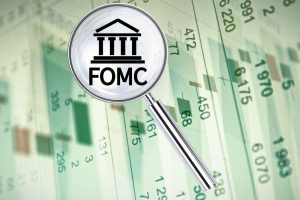
Two things are very likely in the near term. The first is that we will see a rally in small-cap stocks that will kill the bears. The second is that in March, things will get very ugly for investors. What will trigger that ugliness? If I’m right, it will be the U.S. dollar itself.
One could argue that one of the reasons the dollar has been strong is because the Federal Reserve will keep rates elevated this year. As the Fed signals a move toward a gradual decrease in higher interest rates relative to other countries which have far worse economic conditions than the U.S., investors will flock to the dollar. They will be drawn by the prospect of higher returns on investments denominated in the currency.
Why a Strong Dollar Presents Real Risks
What’s the core issue here? Put simply, a strong dollar has negative impacts on corporations and sovereign nations holding debt denominated in dollars.
The main difficulty that comes from a strong dollar concerning foreign dollar-denominated debt is the heightened expense of servicing the debt. As the U.S. dollar strengthens relative to other currencies, it requires borrowers holding foreign currencies to use more of their domestic currency to exchange for dollars to fulfill their debt obligations, including interest and principal repayments. This escalation in the cost of debt servicing, when measured in the local currency, can put significant financial pressure on both sovereign and corporate borrowers. This pressure increases the likelihood of default, particularly in nations that have limited financial leeway or lower reserves of foreign exchange.
It can lead to a sovereign debt crisis.
And when I look at the dollar chart, given recent strength pushing against prior highs, I get nervous.
A surging dollar intensifies currency risk due to the increased unpredictability and potential negativity of exchange rate fluctuations. This inherently discourages investment and makes financial planning more complex for both governments and businesses.
Moreover, in a strong dollar scenario, the expense of refinancing existing debt escalates as the costs linked to issuing new debt to cover maturing obligations increase. This situation can trigger a nasty cycle of growing debt burdens. This is especially true if the dollar keeps strengthening or maintains its strength for a prolonged period.
The Bottom Line
The broader economic implications of this cannot be understated.
High levels of foreign dollar-denominated debt, combined with a strong U.S. dollar, can contribute to financial instability within a country and in the entire world. It can lead to capital outflows, depreciate the local currency further, and exacerbate inflationary pressures. In extreme cases, it may even trigger financial crises, particularly in vulnerable economies.
And we may be due for an extreme case.
On the date of publication, Michael Gayed did not hold (either directly or indirectly) any positions in the securities mentioned in this article. The opinions expressed in this article are those of the writer, subject to the InvestorPlace.com Publishing Guidelines.







